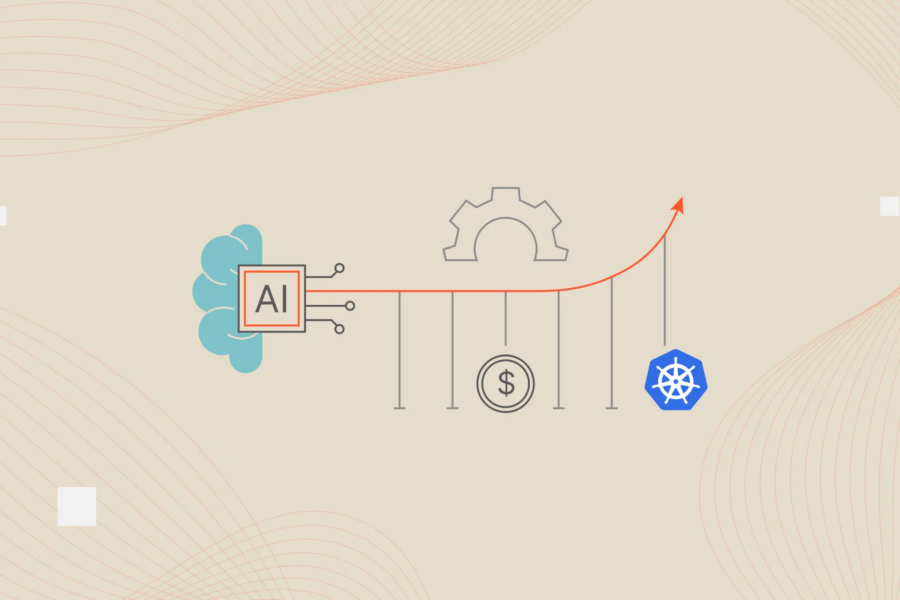
Argo CD 3.0 Release Candidate: A Small but Mighty Leap Forward
Argo CD, the popular GitOps continuous delivery tool for Kubernetes, has announced a major leap forward with the release candidate of Argo CD 3.0. This marks the first significant version upgrade since 2021 and signals a more mature, streamlined future for the tool. Designed to enhance security, performance, and usability, version 3.0 incorporates improved default…

The Machines Are Learning: Inside the Rise of Kubernetes Automation
Date & Time : Apr 24, 12:30 PM – Apr 25, 12:30 PM (GMT+5:30) Imagine a world where platforms manage themselves — scaling, healing, securing, and optimizing without waiting for a human nudge. This isn’t science fiction. This is Kubernetes automation, and it’s happening now. The Future Is Autonomous The dream of a self-operating platform is no longer a…

Don’t Let These 5 Mistakes Sabotage Your Kubernetes Deployment
Kubernetes has become the go-to platform for container orchestration, enabling developers to deploy and manage applications at scale with ease. However, Kubernetes’ powerful features come with a learning curve, and even experienced developers can fall into common pitfalls that impact the performance, security, and reliability of their deployments. Understanding these common mistakes—and how to avoid…

Envoy Gateway v1.2: A Powerful Upgrade
Envoy Gateway v1.2.0 is here, bringing a suite of new features, performance optimizations, and crucial bug fixes. This release is designed to elevate your networking, traffic management, and security capabilities. Key Highlights Breaking Changes New Features API & Traffic Management Security Observability & Tracing Helm Customization Bug Fixes and Performance Improvements Upgrade Your Envoy Gateway…

Unveiling Resilience: A Conversation with LitmusChaos Co-founder Karthik Satchitanand
In this podcast, we delve into the world of Chaos Engineering with Karthik Satchitanand, a principal software engineer at Harness and co-founder and maintainer of LitmusChaos, a CNCF incubated project. In this episode, we explore LitmusChaos, an open-source platform designed specifically for chaos engineering within cloud-native environments. Karthik discusses LitmusChaos’ capabilities, from offering pre-built chaos…

Karpenter 1.0.0: A New Era in Kubernetes Node Lifecycle Management
In November 2021, AWS introduced Karpenter, an ambitious open-source project designed to transform the way Kubernetes clusters are scaled and managed. Initially, Karpenter was conceived as a high-performance, flexible alternative to the Kubernetes Cluster Autoscaler. Over the past three years, it has evolved dramatically into a comprehensive, Kubernetes-native node lifecycle manager. This evolution has not…

5 Reasons Why Kubernetes is Ideal for AI Inference
Kubernetes, the industry-standard container orchestration platform, has emerged as a powerful tool for managing AI inference workloads. Its ability to efficiently deploy, scale, and manage complex applications makes it an ideal choice for organizations looking to harness the power of AI. In this blog, we’ll explore five key reasons why Kubernetes is the perfect fit…

Kubernetes 1.30: A Comprehensive Overview of New Features
Kubernetes 1.30, codenamed “Uwubernetes,” has arrived, packing a powerful punch with 45 enhancements designed to elevate your container orchestration experience. Let’s delve into the key features that will empower developers and operators alike: Stable Powerhouse: Alpha Innovations: Beta Breakthroughs: Ready to experience the difference? Unlock the full potential of your Kubernetes clusters with our platform….

Boost Efficiency and Security: Kubermatic Kubernetes Platform Empowers You
Hey there, infrastructure enthusiasts! This blog post is here to introduce you to the latest and greatest features of the Kubermatic Kubernetes Platform (KKP). KKP empowers you to leverage the power of AI for streamlined operations and ensures seamless backup, recovery, and migration capabilities for your Kubernetes clusters. Embrace the Future: AI-Powered Infrastructure KKP takes…

Unveiling Hidden Threats: Detecting Unauthorized Access in Kubernetes with eBPF
Kubernetes reigns supreme as the container orchestration platform, but its vast power demands robust security. This blog explores eBPF (Extended Berkeley Packet Filter), a powerful tool for safeguarding your Kubernetes clusters. What is eBPF? eBPF allows you to run custom code within the Linux kernel for monitoring and control. It acts like a Swiss army…
